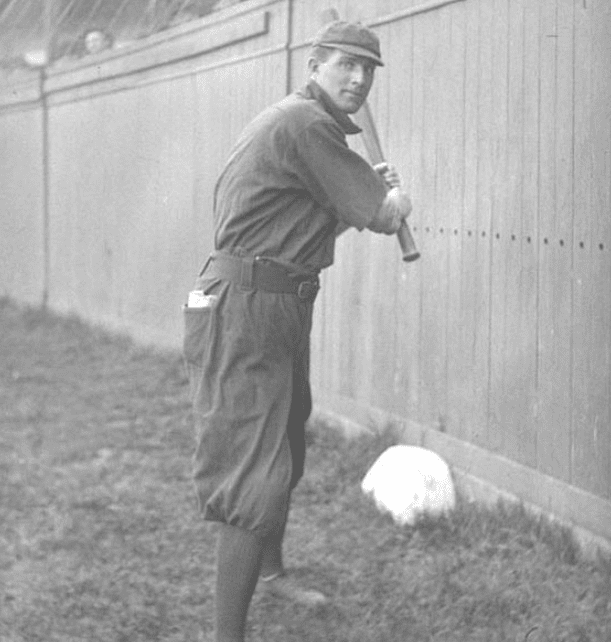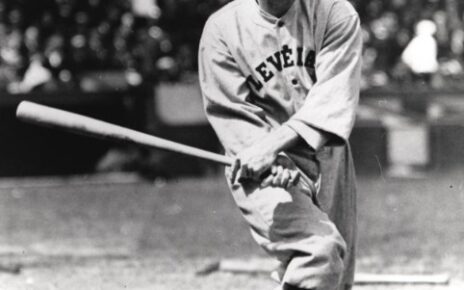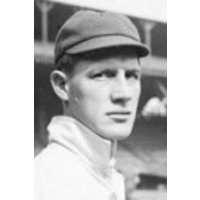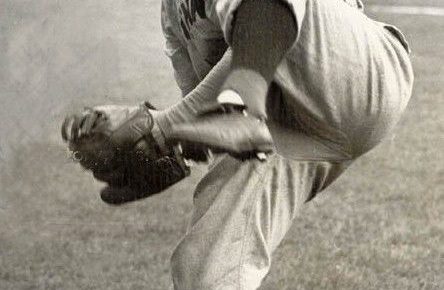In the 1890s two-way play was just a thing that happened. That’s not to say that it was extremely commonplace, but if you could swing a bat and throw a baseball you could play both ways if you so desired. That’s how baseball ended up with players like Cy Seymour. If they played great or awful on both sides of the ball that wasn’t considered remarkable, they were just doing their jobs as baseball players after all.
Seymour first came up as a pitcher, but after showing he could hit he started getting regular chances in the field almost immediately. In 1896 Seymour played for the New York Metropolitans of the A-level Atlantic League. That year he appeared in 12 games as a pitcher and threw 86.0 innings. He put up a 1.57 ERA and struck out 57. He did walk his fair share, 48, but in this era, pitchers walked plenty more hitters than they do today, or than any other era in history really. Meanwhile, Seymour played 22 games in the field, most likely in the outfield. He hit .290 and had 11 stolen bases, but we don’t know much about the rest of his time spent as a position player. All in all though, not a bad start to his two-way career.
By 1898 the man they called Cy had found his way to the New York Giants of the National League. He was a regular for the fairly mediocre NL club. Seymour was a borderline mediocre player himself, at least when viewed through a modern lens. He played 1 game at second base, 10 in left field, 12 in center, and 15 in right. His slash line of .276/.300/.347 is pretty empty. In 309 plate appearances he barely walked or struck out, but his OPS+ of 87 is a sign that he was generally making lots of bad contact. Over 45 games and 356.2 innings Seymour was much better on the mound if incredibly wild. He led the NL in strikeouts, 239, and SO/9, 6.0. But, he also led the NL in wild pitches, base on balls, and hit by pitch, with 19, 239, and 32 respectively. His ERA of 3.18 was still highly respectable while his ERA+ of 110 was above the league average. Seymour’s total rWAR of 3.5 in 1898 was good, but his hitting clearly held him back.
The six-foot-tall left-hander continued playing both ways in 1899. He appeared in 32 games on the mound and had another slightly above average season. He still struggled with control issues, a WHIP of 1.554 will do that to you, but an ERA of 3.56 in 268.1 innings did garner him an ERA+ of 105. Seymour was much better with the bat this year, amassing an above-average OPS+ of 108. He saw time at first base for 3 games, third base 1, left field 2, center field 1, and right field 5. He again barely struck out or walked, but his slash line was a much improved, .327/.344/.409. The man they should have called by his real name, Bentley, did this over 168 plate appearances. A total rWAR of 3.0 was a step back because his improved hitting was evened out by slight regressions on the mound.
1899 marked the end of Seymour’s two-way career. He would pitch in a couple more games throughout his career, but a dead arm stopped him from ever appearing regularly. That’s a shame because Seymour showed decided improvement with the bat and he could have been a real two-way threat. Or, maybe he only improved as a hitter because he wasn’t pitching anymore? We’ll never know the answer to that and Seymour remains a two-way what if?
Lead photo courtesy of Unknown – Unknown




